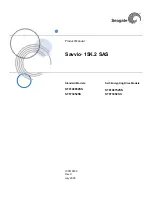
CHAPTER 23. LIVE INSTRUMENT REFERENCE
362
priority to the most recently played notes, cutting off the oldest notes as necessary.
The Octave, Semi and Tuning controls function as coarse and ne tuners. Octave transposes
the entire instrument by octaves, while Semi transposes up or down in semitone increments.
The Tuning slider adjusts in increments of one cent (up to a maximum of 50 cents up or
down).
PB Range sets the range in semitones of pitch bend modulation.
Stretch simulates a technique known as stretch tuning, which is a common tuning modi ca-
tion made to electric and acoustic pianos. At 0%, Analog will play in equal temperament,
which means that two notes are an octave apart when the upper note's fundamental pitch is
exactly twice the lower note's. Increasing the Stretch amount raises the pitch of upper notes
while lowering the pitch of lower ones. The result is a more brilliant sound. Negative values
simulate negative stretch tuning; upper notes become atter while lower notes become
sharper.
The Error slider increases the amount of random tuning error applied to each note.
The four Quick Routing buttons in the left side of the display provide an easy way to quickly
set up common parameter routings. The upper left option con gures a parallel routing
structure, with each oscillator feeding its own lter and ampli er exclusively. The upper
right button is similar, but the oscillators each split their output evenly between the two
lters. The bottom left option feeds both oscillators into Filter 1 and Amp 1, disabling Filter
2 and Amp 2 entirely. Finally, the bottom right option con gures a serial routing structure,
with both oscillators feeding Filter 1, which is then fed exclusively to Filter 2 and Amp 2.
Note that the Quick Routing options do not affect any changes you may have made to
the oscillator level, tuning or waveform parameters
they only adjust the routing of the
oscillators to the lters and subsequent ampli ers.
















































